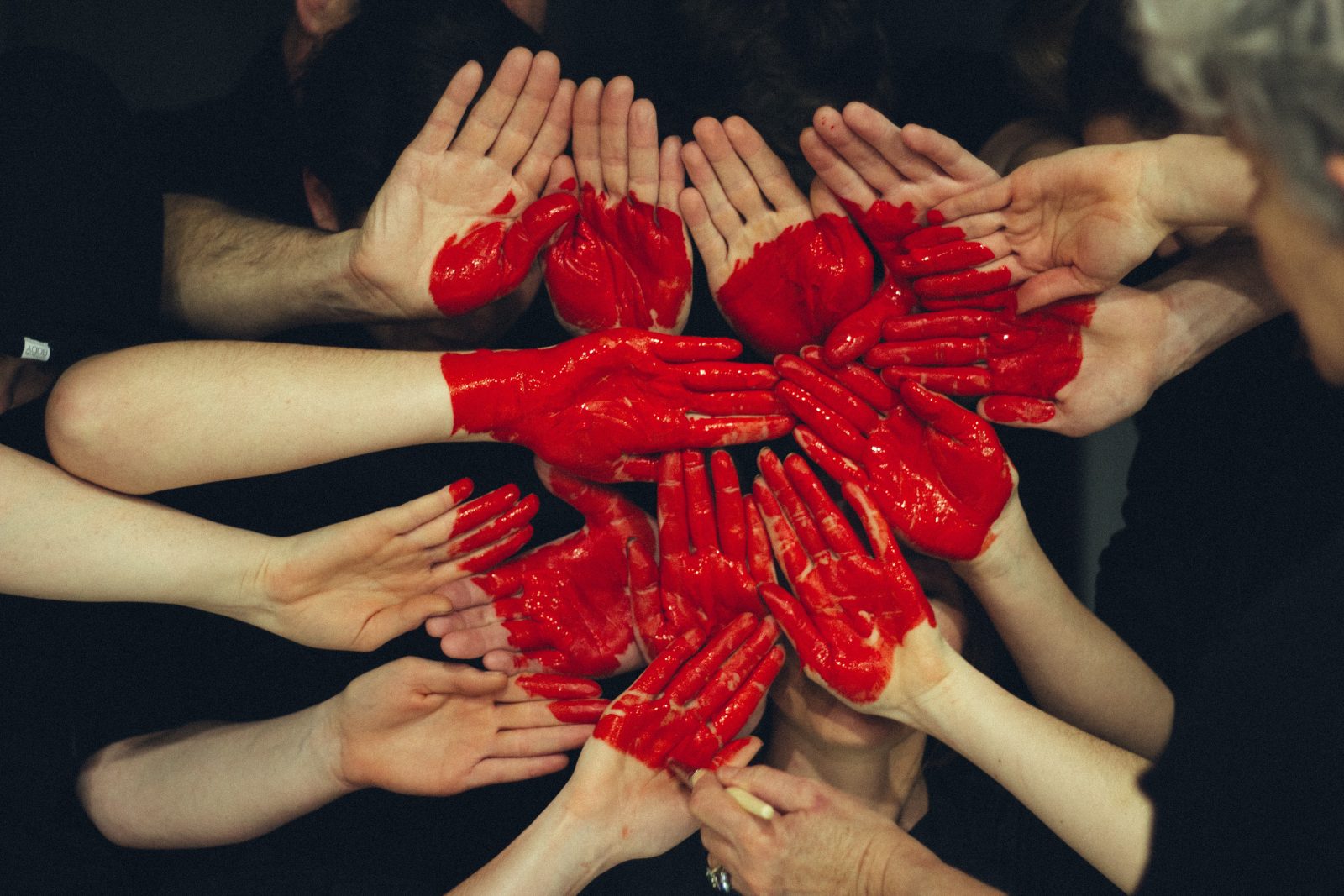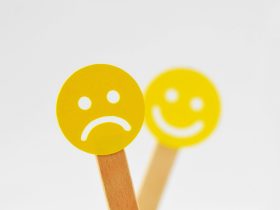We’re all familiar with the experience of falling deep into the vortex of social media, especially the ubiquitous Facebook. Picture this scenario: It’s a quiet Tuesday night, you’re cozied up in bed, and you decide to do some “quick” scrolling before calling it a day. However, what was meant to be a brief glance soon turns into an endless digital journey.
You find yourself commenting on a friend’s post, and then Facebook, ever the facilitator of virtual connections, suggests you befriend an old classmate. Instead of simply accepting the friend request, you embark on a virtual expedition through their profile, discovering the intricacies of their life over the past few years. As you dive deeper, you stumble upon an intriguing article, which sets you on a research quest, and before you know it, you’re entrenched in a comment section that leaves your mind racing at hyperspeed.
The next morning, you wake up feeling utterly drained.
Could it be the blame of the blue light that emanates from our screens, disrupting our sleep patterns? The ensuing grogginess and irritability seem to suggest so. Or perhaps there’s another culprit at play.
Could it be that, while we convince ourselves that our online presence keeps us connected, we’re inadvertently sapping our social energy meant for face-to-face interactions?
Consider this: what if every like, heart, and reply we dole out on the internet is, in fact, depleting our reservoir of energy that we could otherwise invest in nurturing offline friendships?
Friendships can form, even in the virtual world
Friendships can extend into the digital realm, but our brains do not allocate additional or separate energy specifically for online social interactions. There is a finite limit to the number of people we can truly connect with and invest our energy in.
This limitation implies that the late-night hours spent conversing with strangers on the internet can deplete the energy we have available for nurturing relationships with those we know offline.
R.I.M. Dunbar, PhD, a professor in the Department of Experimental Psychology at the University of Oxford, suggests that we can only effectively maintain around 150 friends, including family members, and this limit is determined by the capacity of our brains.
Dunbar and his fellow researchers arrived at this conclusion by conducting brain scans, which revealed a correlation between the number of friends we have, both online and offline, and the size of our neocortex—the brain region responsible for managing relationships.
The second limiting factor in the number of friends we can maintain is time.
According to GlobalWebIndex data, in 2017, individuals dedicated more than 2 hours daily to social media and messaging, marking a 30-minute increase compared to 2012. This trend is expected to persist over time.
“The quality of a relationship is influenced by the time you invest,” Dunbar remarks.
Nevertheless, Dunbar’s 2016 study suggests that while social media enables us to expand our offline relationships and broaden our social networks, it does not override our innate capacity for forming friendships.
Typically, within these networks limited to around 150 individuals, there are inner circles or tiers that demand a certain level of regular interaction to maintain the friendship. This can involve activities like meeting for coffee or engaging in ongoing conversations.
Consider your own social circle and the varying degrees of closeness you share with different friends. Dunbar concludes that each circle necessitates varying levels of commitment and interaction.
He suggests that maintaining meaningful interactions should occur at different frequencies depending on the depth of the relationship. For the inner circle of five closest confidants, regular interactions of at least once a week are crucial. The next layer of 15 best friends should ideally engage at least once a month. As for the broader group of 150 ‘just friends,’ a yearly interaction should suffice to keep those connections alive.
However, there is an exception for family members and relatives, as these relationships typically require less frequent interaction to stay connected.
Now, what happens when your friend or follower count on social media exceeds 150? Dunbar dismisses this as a meaningless number. He clarifies, “We may have numerous connections on social media, but it doesn’t necessarily translate to genuine friendships. Often, we’re simply adding people who would be considered acquaintances in the offline world.”
According to Dunbar, similar to our interactions in face-to-face settings, we tend to concentrate most of our attention on social media toward the 15 individuals closest to us. Approximately 40 percent of our online interactions revolve around our top 5 closest friends, with the remaining 60 percent directed towards our group of 15.
This aligns with one of the longstanding arguments in favor of social media: while it may not expand the number of true friendships, these platforms can be instrumental in preserving and reinforcing our vital relationships.
Dunbar suggests that we should appreciate the value of social media in sustaining longstanding friendships, rather than criticizing it.
One of the advantages of social media is the ability to stay connected with people who live far away, allowing us to witness both significant life events and everyday activities while we carry on with our daily lives.
However, amid the enjoyable aspects, my social media feeds are inundated with news headlines and passionate opinions from both acquaintances and strangers, making it an inescapable part of the experience.
Comment engagement can have an impact on your energy levels, potentially depleting your resources.
After the presidential election, I saw social media as a platform to bridge political divides. I carefully composed politically oriented posts on topics like women’s rights and climate change, aiming for respectful discussion.
However, my intentions backfired when someone bombarded me with uncomfortable direct messages, causing my adrenaline to surge. This situation led me to question my next course of action.
I began to wonder if engaging in these responses was healthy for both myself and my friendships.
In recent years, online interactions have become increasingly intense, transforming virtual discussions into real-life consequences. Whether it’s a moral, political, or ethical debate or sharing personal experiences like #metoo, many of us feel compelled to express our opinions, especially as more familiar faces and voices take opposing sides. But what is the cost, both to ourselves and to others?
Neuroscientist M.J. Crockett suggests that people may feel pressured to express outrage online because they receive positive feedback for doing so. Her research delves into how individuals express moral outrage on social media and whether their empathy and compassion differ online compared to in-person interactions. While a single like or comment may appear to validate one’s beliefs, it can also escalate and impact offline relationships.
Facebook’s research team explored a similar question: Is social media beneficial or detrimental to our well-being? Their conclusion was that spending time passively was detrimental, while active interaction was beneficial.
According to David Ginsberg and Moira Burke, researchers at Facebook, merely broadcasting status updates wasn’t sufficient; people needed to engage one-on-one with others in their network. They found that “sharing messages, posts, and comments with close friends and reminiscing about past interactions” were linked to improvements in well-being.
However, what happens when these active interactions take a negative turn? Even if you don’t unfriend someone due to a disagreement, the interaction can still alter your perceptions of them, at the very least.
In a Vanity Fair article discussing the potential end of the social media era, Nick Bilton noted that a Facebook executive once told him that the primary reason people unfriend each other is because of disagreements on various issues. The executive humorously added, “Who knows, if this keeps up, maybe we’ll end up with people having only a few friends on Facebook.”
Additionally, former Facebook executive Chamanth Palihapitiya made headlines by asserting that “we have created tools that are ripping apart the social fabric of how society works… [Social media] is eroding the core foundations of how people behave with and towards each other.”
Crockett also points out that there is evidence suggesting that people are more willing to mete out punishment when interacting through a computer interface compared to face-to-face interactions.
Expressing moral outrage can invite negative responses, often from individuals lacking empathy for differing viewpoints. When entering divisive discussions, it might be beneficial to transition from online exchanges to face-to-face conversations.
Crockett highlights that research also indicates that hearing others’ voices can help counteract dehumanization in political debates.
For those passionate about political and social activism who choose to persist on social media, consider the advice of Celeste Headlee. Drawing from her extensive interviewing experience on Georgia Public Radio’s daily talk show “On Second Thought,” which inspired her to write “We Need to Talk: How to Have Conversations that Matter” and deliver her TED talk, “10 Ways to Have a Better Conversation.“
Headlee advises, “Think before you post. Prior to responding on social media, carefully read the original post at least twice to ensure comprehension. Then, conduct some research on the topic. This approach requires time, which not only slows you down but also keeps your thoughts in context.”
Autumn Collier, an Atlanta-based social worker specializing in treating individuals with problematic social media usage, concurs. She notes that engaging in political posting demands a significant amount of energy with limited returns on investment.
While it might provide a sense of empowerment initially, it often leads to getting entangled in a cycle of anxiously awaiting replies and engaging in an unhealthy and unproductive exchange. A more purposeful use of that energy could involve supporting a cause or composing a letter to your local representatives.
There are instances where simply disengaging from the conversation may be the wiser choice. Recognizing when to take a step back and disconnect from online interactions can prove pivotal for safeguarding your mental well-being and preserving future friendships.
Too much “liking” and no real-life “playing” can lead to a generation plagued by loneliness.
When it comes to maintaining connections with friends, it’s crucial to recognize the value of in-person interactions once again.
While Dunbar has extolled the virtues of social media, an increasing body of research sheds light on its adverse impacts, such as heightened depression, anxiety, and a sense of isolation.
These emotions can be attributed to the number of people you follow and engage with, whether they are friends or not.
Jean Twenge, the author of “iGen: Why Today’s Super-Connected Kids Are Growing Up Less Rebellious, More Tolerant, Less Happy — and Completely Unprepared for Adulthood,” asserts that despite social media’s promise of enhanced connections, several studies indicate that those who spend more time on social platforms tend to feel lonelier, not more connected.
Twenge’s article in The Atlantic, titled “Have Smartphones Destroyed a Generation?” caused quite a stir recently, leading many millennials and post-millennials to engage in what can be a stress-inducing activity: expressing moral outrage.
However, Twenge’s research is not without merit. Her investigations into the impact of social media on teenagers reveal that the latest generation spends less time socializing with friends in person and more time interacting online.
This trend appears to be associated with findings of adolescent depression, feelings of disconnection, and an increased sense of loneliness. However, while none of these studies establish causation, there is a prevailing sense of shared experience, commonly referred to as FOMO, or the fear of missing out. Remarkably, this phenomenon isn’t limited to a specific generation; spending excessive time on social media can induce similar effects in adults, including older individuals.
FOMO can spiral into a destructive cycle of comparison and inactivity. Even worse, it may lead you to confine your “relationships” to the realm of social media. Instead of savoring quality time with friends, partners, or family, you find yourself immersed in the stories and Snaps of others enjoying their moments with loved ones.
Rather than pursuing the hobbies that bring you joy, you end up watching others partake in activities you wish you could engage in. This habit of “hanging out” on social media can result in neglecting friendships across all social circles.
Remember Dunbar’s research? If we neglect regular interactions with our closest companions, he warns, “the quality of these friendships gradually and significantly deteriorates.” He adds, “Within just a few months of not seeing someone, they are likely to slip into the next level of our social connections.”
Social media represents a novel frontier that still lacks a comprehensive set of rules.
In a manner reminiscent of the iconic opening line from “Star Trek,” which proclaims “Space: The final frontier,” one might consider the internet as a similar frontier.
The World Wide Web boasts limitless storage and, much like the cosmos, possesses no definitive boundaries or limits. However, while the internet may be boundless, our energy, physical bodies, and mental faculties do have their limitations.
Larissa Pham, in a widely circulated tweet, eloquently conveyed the importance of disconnecting when overwhelmed by the scale of human suffering: “this AM my therapist reminded me that it’s ok to go offline bc we arent made to process human suffering on this scale, &now i pass it on 2 u.” This tweet has garnered over 100,000 likes and 30,000 retweets, highlighting the resonance of this message.
The world is currently characterized by an intensity that is further amplified when one is constantly immersed in the online realm. Rather than absorbing news one headline at a time, an average social media feed bombards us with a plethora of stories, ranging from natural disasters to heartwarming dog tales to personal anecdotes.
Many of these stories are engineered to trigger our emotions and keep us engaged in endless scrolling and clicking. However, it is essential to recognize that there is no compulsion to be part of this digital whirlwind at all times.
As Celeste Headlee advises, “Be mindful that maintaining a constant connection to your phone and social media can have adverse effects on your mental and physical well-being. Treat it as you would treats like candy or french fries: Consume in moderation.” Social media is a tool with dual capabilities.
Excessive smartphone usage can deplete the energy that could otherwise be invested in genuine, face-to-face interactions with friends and family. Social media should never be regarded as a panacea for combating boredom, anxiety, or loneliness; the true remedy lies in spending time with your cherished loved ones.
Research underscores the vital role that strong friendships play in maintaining one’s health, especially as we age. A recent cross-sectional study involving over 270,000 adults revealed that strains in friendships were predictive of more chronic health issues. Thus, it is crucial not to keep your friends at arm’s length, confined within the confines of your phone and direct messages.
As Robin Dunbar asserts, “Friends are there to offer us a shoulder to lean on when life takes a toll. No matter how empathetic someone may appear on Facebook or even during a Skype call, ultimately, it is the presence of a real, physical shoulder to cry on that truly makes a difference in our ability to cope.”















Find Us on Socials